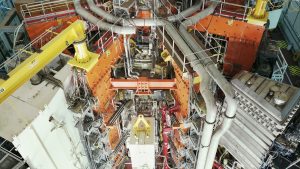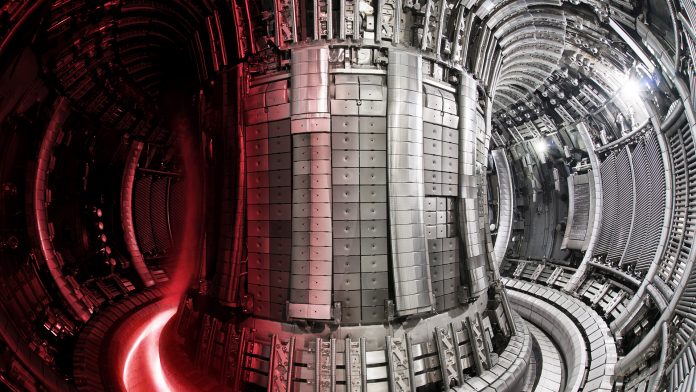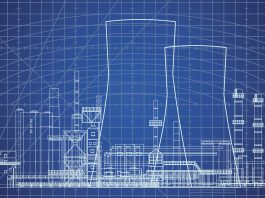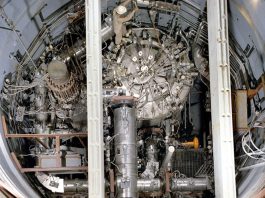Heather Lewtas, Head of Innovation at UK Atomic Energy Authority, provides updates on the latest activities in the UK’s effort to commercialise fusion energy.
Fusion, where atomic nuclei collide and release energy, is the process that heats the Sun and all other stars. In the global transition to cleaner energy, developments in fusion power are significantly accelerating as recognition grows for its use as an abundant source of low carbon electricity.
The UK is amongst many nations seeking to ramp-up activities to commercialise fusion energy. This is the main goal of government research organisation UK Atomic Energy Authority (UKAEA). An executive non-departmental public body sponsored by the Department for Business, Energy & Industrial Strategy, UKAEA researches fusion energy and related technologies, with the aim of positioning the UK as a leader in sustainable fusion energy.
UKAEA and other research organisations around the world are developing ‘tokamak’ devices, which use magnetic fields to confine fusion fuel, as a design for future fusion power plants. UKAEA’s Spherical Tokamak for Energy Production (STEP) programme aims to build a prototype fusion power plant in the UK by the early 2040s.
Alongside STEP, the organisation’s main research goals include the experiments on the MAST Upgrade spherical tokamak; participation in the Joint European Torus (JET) research programme; a theory and modelling programme which studies key areas of plasma physics and predicts performance of future tokamaks such as ITER; and studies of the materials and technology needed in ITER and fusion power stations.
Georgie Purcell, Editor of The Innovation Platform, spoke to the UKAEA’s Head of Innovation, Heather Lewtas, to discover how UKAEA is working to commercialise fusion energy.

What role can fusion energy play in meeting low carbon targets?
Fusion promises to be a safe, low carbon, and sustainable part of the world’s future energy supply. It has the potential to provide ‘baseload’ power, complementing renewable and other low carbon energy sources as part of many countries’ energy portfolios.
As part of a ‘low carbon energy mix’, it could help sustain ‘net zero’ in the second half of the century and beyond.
It is clear we must make significant changes to address the effects of climate change, and fusion energy offers huge potential as a near-limitless fuel, and a low carbon, safe, and sustainable power solution for the long term.
Fusion complements other sustainable energy forms, and is not dependent on the weather, unlike solar and wind. Fusion energy is also carbon-free at the point of generation.
What are the major challenges facing the path to commercialise fusion energy in the UK?
Achieving sustainable fusion energy is extremely difficult. It is one of the great scientific and engineering challenges of our time.
We have conducted fusion experiments – at the megawatt scale – on the record-breaking Joint European Torus (JET). Building on our extensive experience and expertise, we are working on the design of powerplants that will produce net electricity. The Spherical Tokamak for Energy Production (STEP) is aiming to deliver a prototype UK fusion energy powerplant producing net electricity by the 2040s.

Once proven in integrated plants, fusion needs to be deployed at scale to provide a low carbon source of power, addressing global demand. It can be used by industry or communities. We think fusion can be part of the world’s energy supply in the second half of this century.
UKAEA is also undertaking cutting-edge work with academia, other research organisations, and the industrial supply chain in a number of enabling areas. Putting fusion electricity on the grid (economically and reliably) using a tokamak requires finding and integrating technological solutions to several major challenges. These include:
- Creating a sustained and controlled plasma;
- Using structural materials that withstand high energy neutrons and operate at high temperatures (for thermal efficiency);
- Deploying plasma facing materials that can withstand intense heat;
- Designing and manufacturing robust fusion components with these materials;
- Breeding, storing, and supplying tritium fuel in sufficient quantities for continuous operation;
- Perfecting robotics systems and robotics-friendly designs that minimise time taken for inspections and maintenance; and
- Building plants with high energy efficiency to make best use of the materials and components that are consumed’.
How can innovation help to speed up the process of commercialising fusion energy?
Fusion promises to be a part of the low carbon energy mix in the second half of the century. Rapidly increasing investment and competition is driving innovation and progress.
Other significant aspects to address include low-cost manufacturing solutions, supply chains of components and expertise, and suitable industrial and financing partnerships.
There is huge potential for bringing in technologies and know-how from other sectors to solve fusion challenges faster, for example using manufacturing techniques perfected in the aerospace industry and modifying them to work with fusion materials. There is also a great opportunity to demonstrate the near-term advantages of fusion by taking the novel and exciting technologies invented for fusion and deploying them into other sectors. For example, taking the robotics designed for remote maintenance of a fusion reactor and deploying them into the space sector.
UKAEA is carrying out work with academia, other research organisations and the industrial supply chain across a large range of disciplines to increase the diversity of approach taken in solving fusion challenges.
How can Artificial Intelligence (AI) help to further fusion energy?
AI methodologies and supercomputing power are improving all the time. New learning algorithms are solving more complex problems that would previously have taken months or years. Ultimately, our work will save time and money, as it has in many other industries.
This is an emerging and very promising field. For example, AI is already revolutionising life sciences and healthcare, enabling a faster discovery of new drugs, spotting patterns in complex genomics data, providing predictions for protein folding and helping towards the automation of diagnosis from X-ray and CT scans. There is an equally exciting opportunity for AI to revolutionise fusion, to achieve it faster.
What are the main UKAEA projects that highlight the success of fusion energy?
Results from the JET project announced in February 2022 showed the clearest demonstration yet of the potential for fusion power to deliver safe and sustainable low carbon energy. 59 megajoules of sustained fusion energy was demonstrated by scientists and engineers working on JET, more than doubling previous records achieved in 1997 at the UK Atomic Energy Authority (UKAEA) site in Oxford using the same fuel mixture to be used by commercial fusion energy powerplants.
In May 2021, the initial results from the UKAEA’s ‘MAST Upgrade’ experiment at Culham, near Oxford, UK, were released. They demonstrated the effectiveness of an innovative exhaust system designed to help make compact fusion power plants commercially viable. Tests at the MAST Upgrade, which began operating in October 2020, showed at least a tenfold reduction in the heat on materials with the Super-X system. This is a game-changer for achieving fusion power plants that can deliver affordable, efficient electricity.
Heather Lewtas
Head of Innovation
UK Atomic Energy Authority
www.gov.uk/government/organisations/uk-atomic-energy-authority
https://www.linkedin.com/company/ukaeaofficial/
https://www.facebook.com/UKAEAofficial
https://twitter.com/UKAEAofficial
Please note, this article will also appear in the eleventh edition of our quarterly publication.









